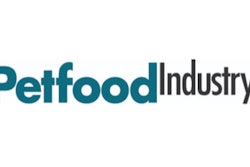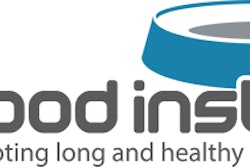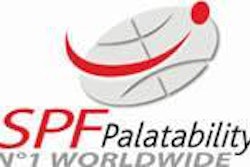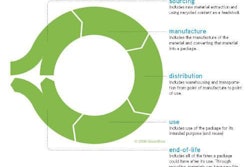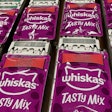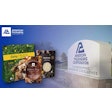Q. What regulatory issues have been taking up your time lately, and why are these issues of current concern?
Dzanis: For me, as the AAFCO Pet Food Committee Advisor for the American College of Veterinary Nutrition, the single specific issue has been the College's proposed amendment of AAFCO PF9 to require calorie content statements on all dog and cat foods. The calorie content statement is arguably the most important individual piece of nutritional information on the label, not only for dogs and cats with "weight issues." Requiring such information will help pet owners and veterinarians choose the most appropriate product for an individual animal. Petfood companies will benefit by creation of a level playing field and generation of goodwill with consumers.
Ekedahl: The continued problem with exporting US-made petfood into China, due to that country's registration requirements. PFI has also been working to correct ingredient prohibitions in a variety of countries stemming from the discovery of BSE in North America. Domestically, PFI continues to work with AAFCO and FDA on labeling and product claim issues. We have spent a great deal of time combating unfair and potentially damaging petfood tax proposals in some states, none of which passed during last year's legislative sessions.
PFI's work with AAFCO on petfood labeling issues resists those that are not needed to show the safety of petfood productssuch as the request for mandatory calorie statements on all petfood and treats.
Harrison: Review of Animal By-Products Regulation 1774/2002 (ABPR) has been an important issue for us (PFMA) over the last few months, as it regulates the use of animal-based raw materials for the production of petfood. Since ABPR came into effect in 2003, industry and regulators have worked to reduce the anomalies and inconsistencies in the existing legislation. The European Union (EU) Commission has decided to rewrite the legislation.
PFMA has also been working with FEDIAF (the European Pet Food Federation) on the Guide to Good Practice for the Manufacture of Safe Pet Foods. The guide will support petfood manufacturers in complying with requirements in Feed Hygiene Regulation 183/2005 EC, which came into effect in January 2006.
The EU Commission has promised to deliver the first draft of the review of the new Marketing Directive. This review will impact the marketing of animal feed, including petfood, and it is important we work with the Commission and national authorities to achieve a workable solution. The industry is concerned that certain ideas designed for farm animal feed could have a negative impact on the labeling of petfood. We need to ensure the unique position of petfood is recognized and reflected in the labeling requirements.
Plant: One of the major concerns for new businesses in Europe is the new set of EU Feed Hygiene Regulations (183/2005/EC). The interrelationship between this regulation and the Marketing Di-rective (79/373/EEC, as amended) requires the plant/business registration/approval number to be included in the statutory declaration.
The new regulations apply to all feed businesses (including petfoods) that are manufacturing, importing, storing, transporting and selling (excluding actual retailing) products, while its predecessors (Directives 95/69/EC and 98/51/EC) only applied to manufacturers handling particular additives or premixes of certain additives (in petfoods).
The difficulty has been in identifying which registration or approval number should be declared on the package. This is particularly an issue when considering that many new and existing businesses are importing products from plants not previously requiring registration/approval under 95/69/EC or 98/51/EC. Further clarification of the rules for compliance with EU Feed Hygiene Regulations for non-EU-based manufacturing plants importing into the EU are expected during 2007.
Sellers: Issues include recordkeeping for the Bioterrorism Act; the animal disposal effects of potential BSE rule changes; glycerin and distiller's dried grains with solubles use in feed and petfood; cloning; dioxin findings and conferences; ingredient approval slowdown; and EU feed hygiene regulationamong others. These issues play a role in market demands, as well as potential and new regulation changes.
Syverson: First, the use of illegal/unapproved substances in animal feed, rendering the product misbranded and/or adulterated. A subset of this type of violation is the use of approved substances for unapproved purposes. Second, claims made in labeling, or established by the intended uses of additives, which define the product as a drug where the additive is not an approved new animal drugthereby rendering the product misbranded and/or adulterated.
These issues are important because safety, efficacy and utility are paramount to proper nutrition. Performance claims and any indication that a petfood product is intended or implied to treat, mitigate, prevent or improve conditions or diseases where the product is not approved for these purposes can lead to inappropriate customer diagnosis, misdiagnosis and delayed treatment.
In many cases, basic consumer fraud is the issue where misbranding occurs. Another aspect would be an issue for responsible businesses. A manufacturer, distributor or guarantor is incurring some risks in using unapproved substances, or making inappropriate claims, with regard to product liability and their relationship with their product liability insurance carrier. Self preservation includes being in compliance with the applicable regulations.
Wilder: Since 2003, when Canada had its first case of BSE, many markets have been closed to Canadian petfoods, or if open, have had rigorous export rules. As a result, Canada has made some significant announcements during the past year, including enhancements to our Feed Ban, which will include, for the first time, petfoods.
New BSE import rules will require exporters to meet import criteria that will include import permits and health certificates. Since a very large volume of petfood comes into Canada from the USA, the new requirements place significant strains on both industry and government, which must take on a new inspection role as well as sign health certificates.
The costs of meeting these new BSE rules are significant. Also, the level of inspections and paperwork required will rise dramatically. Whether these changes will result in a disruption of trade is always a concern.
Q. What do you see as up-and-coming issues?
Dzanis: With publication of the new NRC recommendations, revision of the AAFCO Dog and Cat Food Nutrient Profiles is anticipated. New feed safety initiatives from AAFCO and FDA will also greatly impact petfood manufacturers.
Ekedahl: We will no doubt see more in terms of organics, natural products and novel materials. We are fortunate to have Nancy K. Cook, PFI's vice president of technical and regulatory affairs, chairing the group working on the USDA organic petfood rules. As this group's work proceeds, PFI and its members will have direct involvement in the formulation of the organic rules, since this is such a growing segment.
Harrison: The Marketing Directive is the last major piece of legislation to be reviewed under the European Commission's white paper on food safety published in 2000. This review will keep industry busy for the coming months or even years. Thereafter, we will work to ensure existing legislation is correctly enforced across Europe.
Plant: The development of new regulations will be an area of major activity throughout 2007. Other major changes expected are a rewrite of the Animal By-Products Regulation 1774/2002/EC. This could lead to a number of modifications to definitions, particularly concerning the categories of raw materials (I, II and III).
Other aspects that may change include the introduction of new veterinary health certificates for the import of animal materials and products containing animal materials into the EU.
It is also anticipated that the procedure for applying for the continued use of additives will be published. This will be a major activity area over the coming years for those involved in supplying or using additives in the manufacture of petfoods.
Sellers: Other than the Bioterrorism Act, which is fully implemented, all the others I mentioned will continue to be of concern.
Syverson: Regulators see trends come and go all the time. Regulation is primarily reactive. Laws are written and rules are promulgated as the result of someone doing something that they should not have. The degree to which the industry decides to comply with the laws and regulations will determine what happens in the future.
Wilder: The volume of regulatory issues we are dealing with has risen so drastically in the last three years that there is hardly a moment when we're not seeing something new and of concern to our industry. Often, our industry is pulled into the scope of regulations, even though all common sense would remind regulators of the minimal riskand the long record of safetyour products represent. Getting that message through often takes a great deal of time and effort by our industry.



